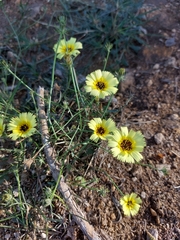Grass
Poaceae
Plantae Poaceae, commonly known as the grass family, is one of the most significant and widespread plant families in the world, playing a vital role in various ecosystems and human agriculture. In the Comunidad Valenciana, the Poaceae family is well-represented and includes numerous species that are important both ecologically and economically.
The Poaceae family is characterized by:
- Structure: These are typically herbaceous plants, though some can be woody. Their leaves are usually long and narrow, with parallel veins.
- Flowers: They have small, inconspicuous flowers grouped together in spikelets, which makes their reproductive structures distinctive.
- Fruit: The fruit of grasses is a caryopsis, a type of dry fruit commonly known as a grain, which is of great importance in agriculture.
- Adaptability: Members of the Poaceae family can thrive in a wide range of environmental conditions, from grasslands and savannas to wetlands and alpine regions.
Some notable species of the Poaceae family found in the Comunidad Valenciana include:
- Avena sativa (oat) - Widely cultivated for its cereal grain.
- Festuca arundinacea (tall fescue) - Commonly used in lawns and pastures.
- Brachypodium retusum - Known locally as "raigrás de invierno," a species adapted to the Mediterranean climate.
The Poaceae are vital not only for their direct economic value but also for their ecological roles, providing food and habitat for a wide variety of wildlife. They also play a pivotal role in soil stabilization and carbon sequestration, making them essential for both natural and managed ecosystems in the region.







